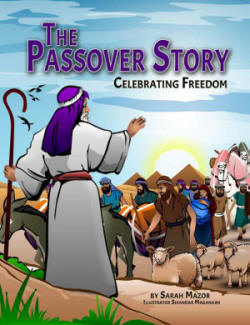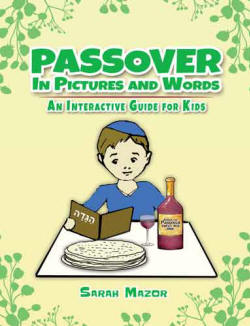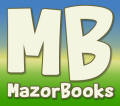 |

Today is:
|
 |
 |
|
|
rosh hashana, yom kippur, sukkot, simchat torah, shmini atzeret,chanukah,hanukkah,purim,pesach,passover,shavuot, lag ba'omer,tisha b'av |
|
|
|
The Passover Haggadah
Click Here for More Holiday Articles
|

iOr SAVE and Buy 2 Books in 1
 |
The text of the Pesach Seder is
written in the Haggadah.
The content of the Seder can be summed up by the following Hebrew
rhyme:
|
Kaddesh, Urechatz
Karpas, Yachatz
Maggid, Rachtza
Motzi, Matzah
Maror, Korech
Shulchan Orech
Tzafun, Barech
Hallel, Nirtzah |
 |
-
Kaddesh:
Sanctification
This is a blessing over wine in honor of the holiday. Four cups of
wine are drunk during the Seder.
-
Urechatz:
Washing
Washing of the hands without a blessing, in preparation for eating
the Karpas.
-
Karpas:
Vegetable
A vegetable, usually potatoes or parsely which are dipped in salt
water and eaten. The vegetable symbolizes the lowly origins of the
Jewish people; the salt water symbolizes the tears we shed as during
or suffering of slavery.
-
Yachatz:
Breaking
The middle of the three matzahs on the table is broken. The smaller
part is returned to the pile, and the larger is set aside for the
afikomen (see below).
-
Maggid: The
Story
A retelling of the story of the Exodus from Egypt and the first
Pesach. This begins with the youngest person asking The Four
Questions, a set of questions about the proceedings designed to
encourage participation in the seder.
-
Rachtzah:
Washing
A second washing of the hands, this time with a blessing, in
preparation for eating the matzah and the Seder meal
-
Motzi: Blessing
over Grain Products
The usual blessing that is recited before the consumption of bread /
challah, or grain products.
-
Matzah: Blessing
over Matzah
A blessing specific to matzah is recited, and a bit of matzah is
eaten.
-
Maror: Bitter
Herbs
Bitter vegetable (usually raw horseradish or romaine lettuce) it is
eaten, to symbolize the bitterness of slavery. The maror is dipped
charoset, a mixture of apples, nuts, cinnamon and wine, to remind us
of the mortar used by the Jews in building during their slavery.
-
Korech: The
Sandwich
The maror is eaten together with matzah and the paschal offering in
a sandwich. This is done in honor of the great sage, Hillel, who
recommended this ritual.
-
Shulchan Orech:
Dinner
A festive meal is eaten. There is no particular requirements, yet
traditions have emerged over the generation, and especially amongst
Ashkenazic Jews (Jews of Eastern European decent), where gefilte
fish and matzah ball soup are the delicates de jour.
-
Tzafun: The
Afikomen
The piece of matzah set aside earlier is eaten as "desert," the last
food of the meal. Different families have different traditions
relating to the afikomen. Some have the children hide it, while the
parents have to either find it or ransom it back. Others have the
parents hide it. The idea is to keep the children awake and
attentive throughout the pre-meal proceedings, waiting for this
part.
-
Barech: Grace
after Meals
Grace after meals is recited thanking God for the meal.
-
Hallel: Praises
Several psalms are recited, in praise of God.
-
Nirtzah: Closing
The official conclusion of the Seder, that ends with the expression
of hope the we may celebrate Pesach "next year in Jerusalem."

The Ten Plagues of Egypt - a Passover (Pesach) brings you much more about the holiday, its
meaning and its traditions... See the links below.
|
|












